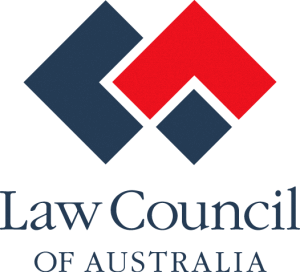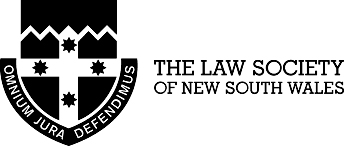- TAX LAWYERS, TAX ADVISORY, TAX COMPLIANCE, EXPATS - SYDNEY, BRISBANE, MELBOURNE, CANBERRA
- 1300 334 518
- admin@waterhouselawyers.com.au
5 common ways that your ATO payment arrangement can default, and what to do to avoid it
Tax Debt
5 common ways that your ATO payment arrangement can default, and what to do to avoid it
If you owe the ATO a debt that you can’t pay upfront, then you should be in a payment arrangement. This is an agreement between you and the ATO where you agree to pay off your tax debt over time in instalments. In return, the ATO agrees not to use its debt collection powers against you.
Getting into a payment arrangement with the ATO is one thing. Keeping the payment arrangement on track is a different story.
5 ways your payment arrangement can default
1. Payment not being received on time
This might seem like an obvious one, but payment arrangements often default because of late payment. Usually, the payment is made on the due date and time isn’t allowed for the payment to clear into the ATO’s system.
It’s important to remember that the due date for payment is when the payment should be received by the ATO.
Each type of payment takes a different time to show up on the ATO system. Make sure to check how long your payment type takes to clear, so that you know your payment will be processed on time.
2. Paying to the wrong account
If you’re running a business, you will usually have more than one account with the ATO.
You will usually have an income tax account and an integrated client account (which is for your GST, pay as you go withholding, etc). You might also have other accounts, such as:
- a legal action account – you will have this if the ATO has initiated debt recovery proceedings against you for unpaid tax.
- a superannuation guarantee account – you will have this if you have missed payments for your employees’ superannuation.
It can be difficult to keep track of all these accounts. But it is important that you do – especially when you’re in a payment arrangement.
Let’s say that you have two tax debts (for different types of tax). These debts might be owed on your integrated client account and your income tax account. When you enter into a payment arrangement with the ATO for these accounts, the ATO views these as two separate arrangements that require separate monthly payments.
So, you may have a payment arrangement of $1,000 per month into your integrated client account, and $400 per month into your income tax account. The payment details for each of these accounts will be different.
This means you need to be careful when you’re making your monthly payments. Make sure that each payment goes into the right account. If you accidentally make both of your payments to the same account, one of your payment arrangements will default.
The ATO doesn’t automatically monitor your accounts to make sure your payments are going into the right place – this is up to you. So be careful – you don’t want a simple mistake to trigger a default of a carefully negotiated payment arrangement.
3. Your payment is less than expected
The ATO’s system looks at each payment it receives and matches it up against what it is expecting to receive. This means that if one payment is less than expected, it will flag a default.
For example, a default happens if the ATO is expecting $1,000 per month, and you pay $1,200 one month and $800 the next month. Your agreement with the ATO is to pay $1,000 each month; anything less than this is a default.
In this situation, the ATO will treat your extra $200 payment from the month before as a voluntary payment. It doesn’t apply it as a pre-payment toward next month’s payment.
Similarly, if you get a tax credit or refund (for example, a GST credit), this has no effect on your payment plan. It won’t replace your regular required instalment payment, so you need to make sure you keep paying your usual monthly amount.
4. Not keeping up with all future obligations
If you’re in a payment arrangement, you need to make sure that you meet all your future tax obligations. This means that you must submit all your future lodgements on time, and you must pay any new tax debts by the due date. These new debts aren’t part of the payment arrangement – if you don’t pay them, you will default.
5. An amendment to an old return increases your tax debt
A default can be triggered by an ATO audit or review of a previous tax period that results in a change to your tax assessment.
For example, if you are an employer, the ATO matches information contained in your PAYG withheld statement with the amounts in your employees’ tax returns. If these amounts don’t match, the ATO will send you a ‘please explain’ letter. If you don’t respond, then the ATO will relook at the amount of tax you owe for that particular tax period. If this is an increase in tax, it will cause a default of your payment arrangement.
What this means is that you shouldn’t ignore the ATO’s ‘please explain’ letter. Even if you don’t understand, you should get advice about it and work with the ATO to find out the right amount of tax. If it turns out that you made a mistake, then you should have the chance to renegotiate your payment arrangement.
Setting up a direct debit
The ATO will generally ask if you want your instalments taken out of your account by direct debit. This is a good option to make sure that:
- your payments are always made on time
- each payment is for the right amount
- each payment goes into the correct ATO account.
But this only works if you know you will always have the right amount in the nominated bank account. If you sometimes pay the ATO out of different bank accounts, or sometimes by credit card, then a direct debit arrangement is not for you. You should only agree to a direct debit plan if you know that you will always have enough money in the account.
What to do if you think you’re going to default
If you can’t pay your instalment by the due date, the best thing to do is to make contact with the ATO. You should do this as soon as you realise that you will have a problem. You may be able to renegotiate the arrangement so that it doesn’t default. It’s much better to do this than wait until a default has happened.
Your payment and default history influences the ATO’s decision about whether you can enter into a new arrangement and what the terms of that arrangement should be. For example, if you have a bad compliance history, the ATO may ask you to pay a large upfront payment or ask that you pay by direct debit.
A poor compliance history can also mean that the ATO will only agree to a short payment arrangement – e.g. 6 months instead of a year.
Because your payment history influences the terms of future payment arrangements, it’s best to keep in contact with the ATO. Try to renegotiate your payment arrangement before a default happens.
What happens when you default
If your payment arrangement defaults, then the ATO can use one of its many debt collection powers against you. This can include issuing a garnishee notice to your bank, or serving you with papers to try to wind up your company or make you bankrupt. You can read more about the ATO’s debt collection powers here.
Making early repayments
Remember that interest continues to be added onto your tax debt even when you’re in a payment arrangement. This means that, if you can pay off the debt earlier than agreed, you might want to do so. This is because the rate of the General Interest Charge is higher than what you would pay on a standard mortgage (close to twice the amount).
If you want more information about negotiating a payment plan, download my free eBook here.
This post is not legal advice; it is a summary of a complicated area of the law.
RELATED ARTICLES:
Credentials
Recognition




